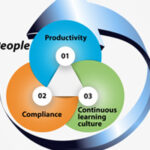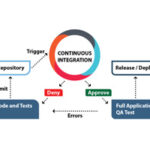What is an enterprise application?
The software solution used across departments of an enterprise to improve overall efficiency, effectiveness and productivity of various functions. Such system normally works on single, undisputed source of master data; and modules exhibit usage in multiple departments with interdependency over one-another.
What is a successful enterprise application deployment?
Those who are experienced in dealing with enterprise applications and their deployment, this is very tricky question to answer, indeed. The definition of success drastically varies among project delivery managers of software service provider, CIO representing client company, end users, power users and opinion builders.
The way enterprise application market is influenced by the biggies like Oracle, SAP, Microsoft and the money power they always have had to build and influence opinions, the answer will come around robustness of solution, brand name of deployment service provider and so on… So, to make the case lucid, management consulting companies are engaged to define scope and their IT counterpart are found most suitable to convert that scope into solution. Success assured! If solution is not used or consumed, the business is not mature enough to adopt industry standard best practice.
In many a case, I have observed that the end user is still not comfortable with the processes implemented in the new enterprise application against legacy one. The way he operates normally is modelled around enterprise data flow, and many times it works out pretty different to the way software needs to be used. There will be change management process the user and the organization shall go through. Still, the problem does not get resolved! As most of the enterprise applications are built to solve enterprise level problems and they are weak in user engagement and user experience. The reason given is robustness. The excuse is control. What can user do? He will ‘work’ with other tools he is comfortable with; and feed the data or end result in enterprise application. The duplication of effort, inviting involving more people in operations which already defies original idea of increase in productivity!
Don’t worry. Improved accuracy and data robustness are still good enough as success factors. This idea of single, undisputed source of enterprise data is already diminishing with Google’s shared and distributed philosophy. Now there are multiple tools which connect to more than one heterogeneous sources of data to produce analytics which can be consumed. Now, we can already have a situation, we can deploy small; to-the-purpose applications which fits the way user works. It not only improves accuracy, it also improves user efficiency. Since these applications are small, they are agile. They can be tweaked to match user needs and thereby giving unmatched user experience. More, since they are distributed and disjointed, carries less amount of risk as a result of any change.
Well, the refurbished approach given above is not really time tested and will really challenge the guts of the decision maker to choose and implement one. In traditional approach, one can hide behind on-paper success against ground level failure. In new approach, one is much more exposed.
Let us wait and see how this new approach unfolds and how fast the change really happens; as enterprise application landscape is slowest in adapting change!



